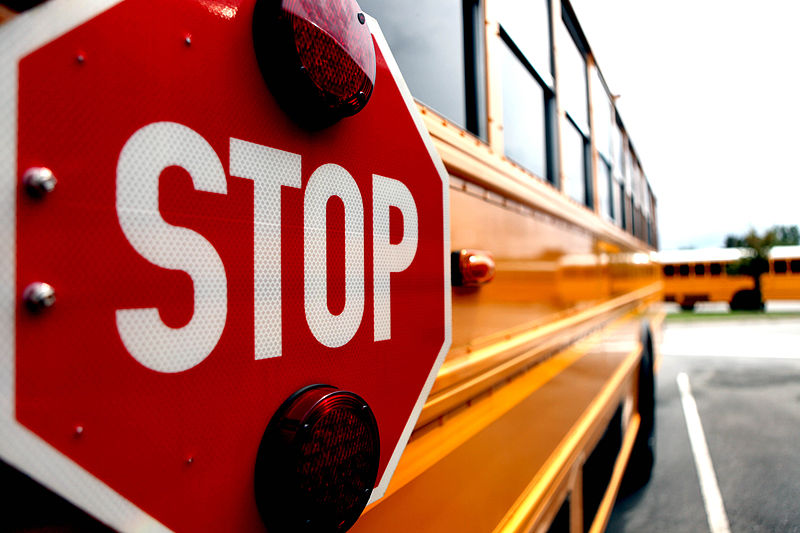Commentary: Shattered Glass
The zero-tolerance policies of the nation’s schools have surpassed the point of ridiculousness and entered the realm of outrage in the eyes of the public this month. With the incident at MacArthur High School in Irving, Texas gathering the eyes of all media outlets, the policy has come under immense fire. Yet this isn’t the first altercation between administration and students that has caused a national uproar. The practice of containing violence through strict and unforgiving consequences, regardless of the severity of the act or the extenuating circumstances involved, has been continuously and effectively proven to be futile.
Ahmed Mohamed’s new Twitter account @IStandWithAhmed has 114,000 followers and the iconic photo of his arrest has activists of all backgrounds heaping on support to the 14 year old Texas Muslim. On the contrast of that, the school administration is being constantly attacked for discrimination, while the Irving Police incessantly hear of how unlawful their “due process” of the minor was. The root of the issue is not corrupted cores within all the individuals under scrutiny; instead, the blame lies in the American school system’s application of the “Broken Windows” theory.
The Broken Windows Theory, or at least the misconstrued interpretation of it, has been the backbone of the current policing trends that characteristically generate absurd amounts of arrests. It has built increasingly hostile relationships between citizens and a police force that seems to be slipping further and further away from the grace of the general population. The interpretation of the theory is that by leaving small infractions, such as the broken windows of an empty building, untouched, the community will be more likely to hold a laxer hold on crime. This is due to the presence of negligence or dissent slowly becoming an accepted norm within the parameters of society. Thus, by “cleaning up” the small messes, a community can prevent the large disasters. Broken Windows has evolved into arrests for minor, often times non-existent, infractions in the name of preserving the peace. Paradoxically, this behavior on the part of police has created an absence of reasonable consequences to offenses and filled it with often time’s over-the-top responses.
Translate this mindset into the school system and you have administrations that jump at the smallest sign of trouble with the heaviest hand possible. The case of Ahmed Mohamed is that of a student bringing a dissembled clock to show his engineering teacher. The clock was seen and mistaken for a bomb. This ultimately led to an arrest, an unlawful interrogation, and the suspension of Mohamed. As the story has developed there have been controversies concerning the innocence of Mohamed, but the event is still bringing attention to the thin-skinned zero-tolerance programs nationwide.
As stated above, this isn’t the first incident of its kind. People will recall the suspension of a 7-year old boy in Maryland on the grounds that he bit his Pop-Tart into the shape of “a gun,” and how upset the public was at the actions of the school. Or they remember the account of a teenage girl who received a text from an intoxicated friend who needed a ride, proceeded to pick up said friend from her party where police arrived simultaneously, was cleared by police as she was clearly sober, and then faced suspension from her school when the administration found out of her “activity” regarding underage-drinking. These, and literally hundreds of other examples, show the extreme and uncalled for nature of zero-tolerance policies in schools.
The exaggerated fears of helicopter parents, snow-plow parents, quick-to-fret administrators, and easily startled individuals have created this unnecessarily tense environment where every action must be measured, and where every fright must be extinguished through force. The first step in the disciplinary process has become what used to be the last resort. This isn’t the case for all situations, obviously, but its prevalence has grown since the 1986 Anti-Drug Abuse Act that had a provision for zero-tolerance standards in the treatment of drug-related offenses within a school. Strict policies on drugs escalated into strict policies on all infringements of school rules. All of these current developments are taking place in a day and age where the actual amount of in-school crime by students has dropped roughly 70% over the past 20 years. We live in a time inherently bogged down with prejudices, stigmas, and inherited beliefs, but these vices are fewer and farther apart than any time in the past. Students are living in the safest time in human history, yet with the harshest school regulations in history. A clear connection can be made between the lowered crime and heavier consequences, but is living in fear of an administration that acts like a police state any better than living in fear of one another? If you asked Jean-Jacques Rousseau, the answer would be “no.”
In the absence of mediation or mitigation of realities, there is a growing resentment held towards educators from their students, and more often than not, the animosity is mutual. This bitterness towards authority and reciprocated lack of trust in students is a vicious cycle that is only exacerbated by less and less leniency in policy. If the problem is to be solved, there needs to be alternative measures of discipline utilized other than the extreme.









Brady Becco • Oct 26, 2015 at 10:41 am
Every point made in this article is valid. I look forward to reading your stories every edition.